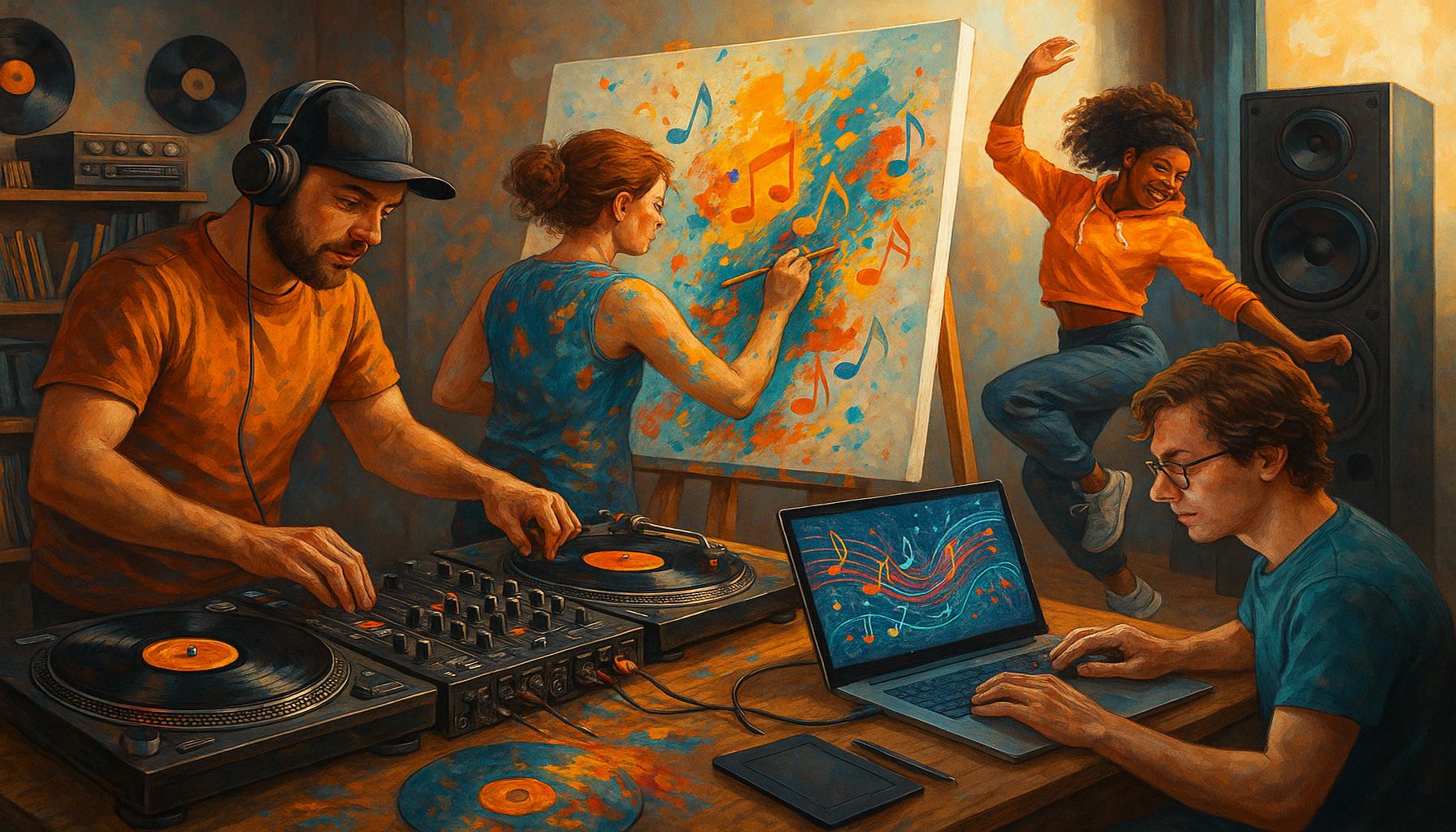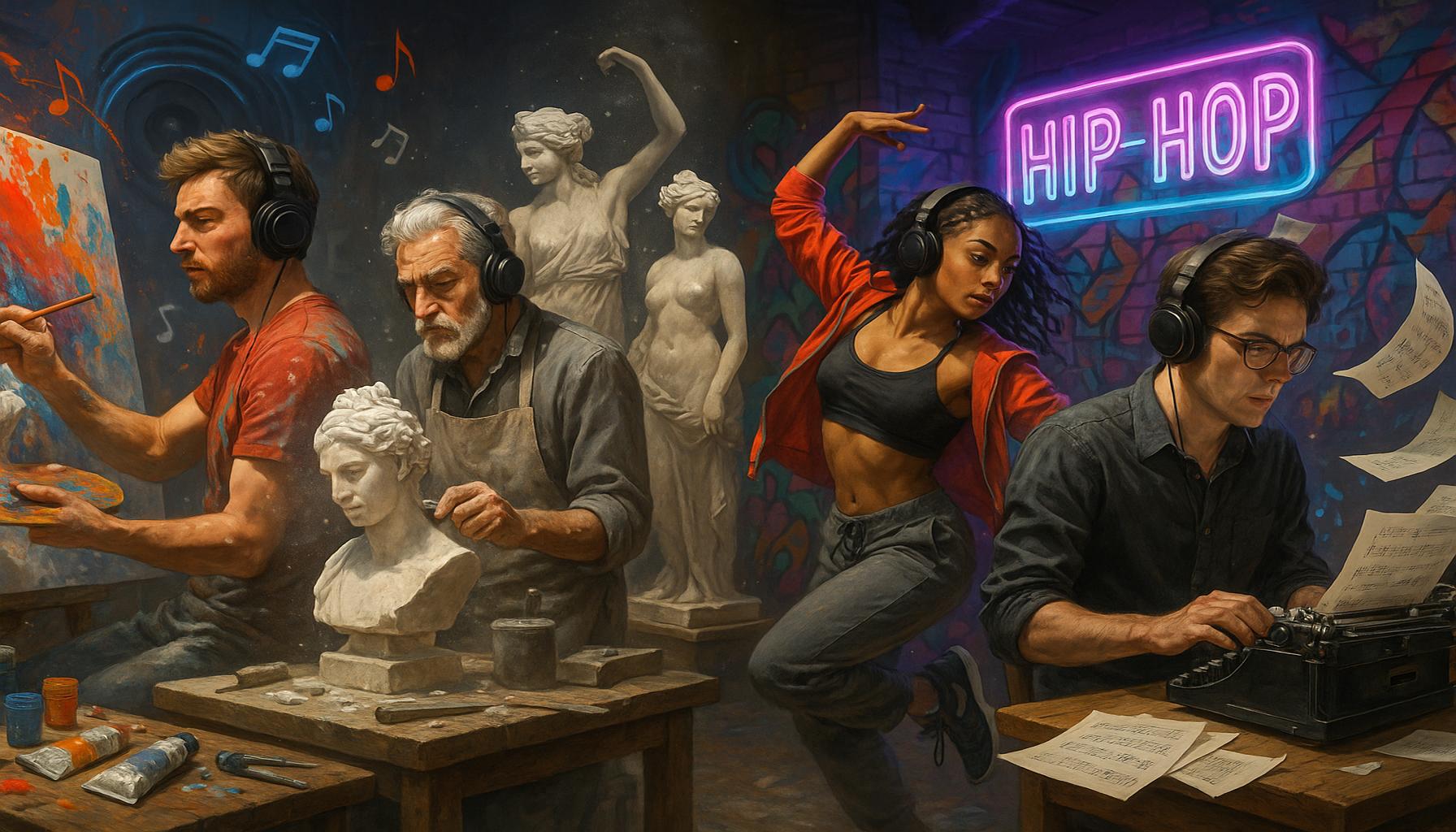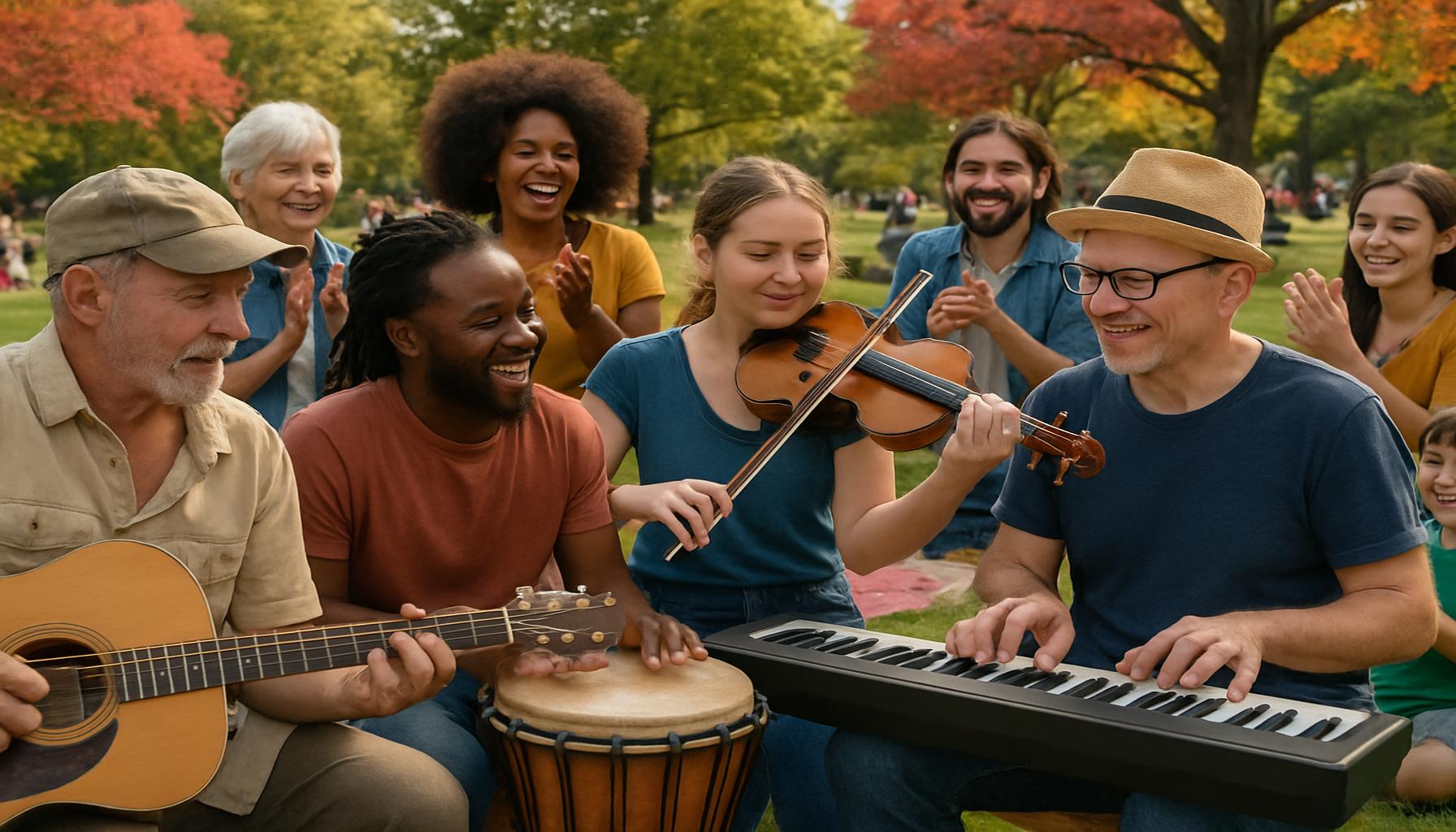How Music Sampling Shapes Modern Creative Expression in Various Hobbies

Understanding the Dynamics of Music Sampling
In an age where creativity knows no bounds, music sampling emerges as a dynamic and transformative tool. This practice, which involves taking parts of existing sound recordings and recontextualizing them in new works, has not only redefined musical genres but has also seeped into various artistic domains, reshaping how artists create. As technology progresses, the possibilities for integrating samples have expanded, bringing a fresh wave of innovation across multiple disciplines.
The Influence of Music Sampling in Different Art Forms
Sampling’s reach extends far beyond music. It’s pervasive in:
- Digital Art: Visual artists now incorporate sampled sounds and audio clips into their multimedia projects, creating engaging narratives that captivate viewers. For instance, an artist might overlay a famous speech onto a visual representation of social movements, enhancing the emotional weight and contextual depth of their work.
- Photography: Photographers are increasingly using sample-based soundtracks to amplify the mood and themes within their photo presentations, transforming simple slideshows into immersive experiences. Consider an exhibition showcasing urban landscapes accompanied by jazz samples; the blend of visual and auditory elements can evoke a stronger emotional response from the audience.
- Fashion Design: Designers often draw inspiration from sampled music, allowing it to inform the colors, textures, and overall vibe of their collections. A contemporary fashion line may, for example, reflect the grit of 90s hip-hop through both its clothing designs and its promotional video soundtracks, appealing to a niche audience that values cultural references.
- Gaming: Video game developers utilize sampled tracks to cultivate more engaging and immersive soundscapes. A racing game, for instance, might employ sampled engine sounds and music from various genres to enhance the thrill of gameplay, effectively engaging players’ senses.
This interconnectedness fostered by sampling promotes a spirit of collaboration among creators. As artists share and remix each other’s work, they challenge traditional notions of originality and ownership. The dialogues surrounding these issues have gained momentum, inviting audiences to reconsider their perceptions of creativity in daily life.
As we explore the myriad ways music sampling influences modern expression, it becomes clear that this practice enriches our cultural landscape. By bridging diverse hobbies and artistic forms, sampling nurtures an ever-growing community of creators, making the world a more intertwined tapestry of creativity. In a society where every beat, note, and word can inspire new ideas, the potential for revolutionary artistic expression is limited only by the imagination.
DISCOVER MORE: Click here to delve into the impact of music on mental health
Music Sampling: A Catalyst for Innovation
The cultural significance of music sampling is undeniable. By blending snippets of existing tracks into new compositions, artists not only pay homage to the original works but also create entirely new narratives. This transformative practice is a driving force behind various hobbies that extend well beyond musical creation, acting as a catalyst for innovation and collaboration among creators. From visual art to fashion design, sampling provides endless opportunities for reinterpretation and reinvention.
Sampling in Visual Storytelling
Visual artists, particularly in the realm of digital art, have embraced sampling to create multifaceted storytelling experiences. The incorporation of soundscapes and audio clips into multimedia projects enhances the depth of the viewer’s engagement. This trend is particularly evident in work that explores social issues. For example, a video installation that combines video footage of climate change protests with a powerful speech about environmental justice can evoke not just visual but also emotional reactions.
In contemporary art shows, multimedia presentations can extend traditional boundaries by inviting audiences to experience art through multiple senses. The collaboration between sound and vision creates a layered experience that pushes the boundaries of what art can achieve, reshaping the way we perceive visual storytelling.
Photography: The Harmonious Blend of Sound and Image
Photography, traditionally a visual medium, is increasingly enhanced by the innovative use of sound. Photographers are now creating immersive experiences by adding sampled music to their exhibitions. This fusion allows viewers to connect more deeply with the photographs, as they relate the imagery to the emotional gradients of the accompanying soundtracks.
- Case Studies: Consider a photographer who showcases urban environments paired with samples of gritty industrial beats or soulful R&B melodies. The imagery alone may tell one story, but the sound underscores the emotional backdrop, transforming the overall impact.
- Technological Advancements: With advances in audiovisual technology, viewers can now engage with photography in dynamic ways, like interactive displays that allow them to choose the soundtrack, adding an element of personalization to the viewing experience.
The Ripple Effects in Fashion
In the fashion industry, music sampling has also left its mark. Designers increasingly draw inspiration from various genres, translating sampled music’s unique essence into their clothing lines. For instance, a collection that nods to the vibrant culture of 80s hip-hop may use bold colors and oversized silhouettes, while also featuring promotional videos set to sampled beats that resonate with the target audience.
This blend of auditory and visual stimuli allows fashion designers to express their creative vision while engaging consumers’ emotions on multiple levels, further highlighting the influential role music sampling plays in shaping modern creative expression.
As we delve deeper into the multifaceted world of music sampling, it becomes increasingly clear that its impact extends far beyond the music industry. By intertwining various hobbies and disciplines, sampling fosters a culture where creativity flourishes in diverse forms, challenging traditional notions of artistic boundaries and ownership.
How Music Sampling Influences Other Creative Hobbies
In recent years, the method of music sampling has transcended the boundaries of music production, profoundly impacting a range of creative hobbies. From visual arts to culinary experiments, sampling encourages a dynamic approach to creative expression.
Visual Arts and Music Sampling
One of the most striking examples of this crossover can be seen in visual arts. Artists increasingly blend soundscapes into their installations, utilizing samples to enhance the emotional depth of their work. For instance, artists might incorporate snippets of spoken word or iconic music clips into their canvases or multimedia pieces, inviting the audience to experience sound in a visual context. This eclectic mix not only challenges the conventional perceptions of art but also reflects the age of technology where everything is interconnected.
Culinary Arts as a Canvas
Similarly, the culinary arts have embraced the ethos of sampling. Chefs are experimenting with flavor profiles by “sampling” techniques and ingredients from various cultures. This fusion exemplifies the sampling principle, where dishes are created by borrowing elements from traditional recipes, resulting in innovative culinary expressions. Just as a music producer might layer sounds to create a unique track, chefs combine flavors to produce extraordinary culinary experiences.The Intersection of Music and Hobbies is a testament to how sampling facilitates a boundless flow of creativity. Those engaged in photography are also finding ways to incorporate sound in their narrative. By using audio clips that evoke specific moods corresponding to their visual stories, photographers enrich their presentations, heightening viewers’ engagement.In summary, the power of music sampling extends beyond sound and has sculpted fresh avenues for creative expression across various hobbies. By borrowing from different disciplines, creators not only break molds but also inspire others to explore limitless possibilities in their crafts. Through sampling, individuals are encouraged to innovate, allowing their passions to flourish in unprecedented ways.
| Creative Hobby | Impact of Music Sampling |
|---|---|
| Visual Arts | Incorporating audio samples enhances emotional resonance. |
| Culinary Arts | Fusion of ingredients creates innovative culinary expressions. |
| Photography | Audio clips enrich narratives, heightening engagement. |
As the realms of creative expression continue to merge, music sampling remains a pivotal force, shaping how individuals within various hobbies interact with their art. This adaptability encourages creators to redefine boundaries and explore new territories in their passion projects.
DISCOVER MORE: Click here to dive into the world of musical composition
Remixing Creativity in Culinary Arts
The culinary world, often seen as a bastion of tradition, has been invigorated by the principles of music sampling. Chefs and food innovators are now analogizing their culinary creations to musical compositions, combining various flavors and techniques in a manner akin to sampling in music. Just as musicians sample beats and melodies to create novel sounds, chefs are layering ingredients and cooking methods from different cultures to produce experimental dishes that invite diners to experience something unexpected.
- Fusion Cuisine: Restaurants that specialize in fusion cuisine exemplify this approach. Take, for instance, a dish that merges Japanese sushi techniques with Mexican flavors, such as sushi tacos. By blending these culinary traditions, chefs craft unique experiences that pay homage to both cultures while forging new gastronomic territory.
- Interactive Dining: Many dining establishments are now integrating music into their menus, selecting sampled soundscapes that complement certain dishes. This innovative approach enhances the sensory experience of dining, creating a multisensory journey that elevates the act of eating to an art form.
Literature: The Sampling of Narratives
Sampling is not limited to visual or culinary arts; it has also made its way into the literary world. Writers are increasingly employing sampling techniques by incorporating passages or concepts from existing works into their narratives. This practice allows authors to pay tribute to their influences while providing readers with fresh interpretations that can provoke deeper contemplation.
Works like remix literature challenge traditional formats by recontextualizing famous texts through modern lenses. For example, a contemporary author might weave elements of Shakespeare’s plays into a modern-day storyline, thereby bridging centuries of literature and inviting discussions about relevance and adaptation. The use of sampling in literature also raises important questions about authorship and the nature of originality, encouraging readers to re-evaluate their understanding of creative expression.
DIY Culture: Sampling as a Path to Individuality
The rise of DIY culture has embraced sampling as a form of personal expression and creativity. Artists and hobbyists across various domains, from crafting to woodworking, are combining found materials, vintage elements, and contemporary styles to produce unique artifacts that reflect their individuality. This practice resonates with the ethos of sampling in music, where the combination of diverse sounds leads to fresh, exciting compositions.
Platforms like Etsy allow creators to showcase their sampling-inspired works, ranging from jewelry made with mixed materials to home décor blending vintage and modern designs. This democratization of creativity enables individuals to explore their passions and share their unique interpretations of the world, further demonstrating how music sampling has given rise to a broader cultural movement that transcends artistic boundaries.
The Emotional Connection
Importantly, sampling fosters an emotional connection between creators and their audiences. Just as a well-placed music sample can elicit nostalgia or joy, when artists pull from cultural references or personal experiences in their sampling practices, they create rich tapestries of meaning that resonate deeply with viewers or participants. This emotional depth encourages an active engagement, making the audience an integral part of the creative narrative.
Through this intricate dance between sound and other artistic disciplines, it becomes evident that music sampling acts as an essential vehicle for innovation and reinvention, enhancing the way we experience and appreciate diverse forms of creative expression. As we continue to explore these intersections, it is clear that sampling not only shapes modern creativity but also influences the very fabric of culture itself.
DISCOVER MORE: Click here to dive deeper
Conclusion
In an era where creativity knows no boundaries, music sampling has emerged as a profound catalyst for innovation across various hobbies and artistic disciplines. From the culinary arts embracing fusion cuisine to literature exploring remix narratives, the principles of sampling enable creators to blend influences and spark originality in ways that resonate with diverse audiences. As we’ve seen, the fluidity of sampling encourages artists to challenge traditional confines, fostering a creative ecosystem where cross-disciplinary collaboration thrives.
Additionally, the impact of sampling extends to DIY culture, where individuals are empowered to express their uniqueness by merging found materials and aesthetics, reflecting the ethos of a shared cultural language. The emotional connections forged through these creative practices enrich the experiences of both creators and audiences, leading to a more engaged and interconnected community. With platforms allowing for wider distribution and recognition, sampling has democratized creativity, enabling newfound voices to emerge and flourish.
Ultimately, the transformative power of music sampling is redefining how we perceive creative expression in modern society. As artists continue to harness the essence of sampling, it will be intriguing to witness how these conventions evolve and inspire future generations. The interplay of sound, flavor, narrative, and style not only shapes contemporary creativity but also mirrors the diverse fabric of our culture, underscoring our collective journey of exploration and innovation.


